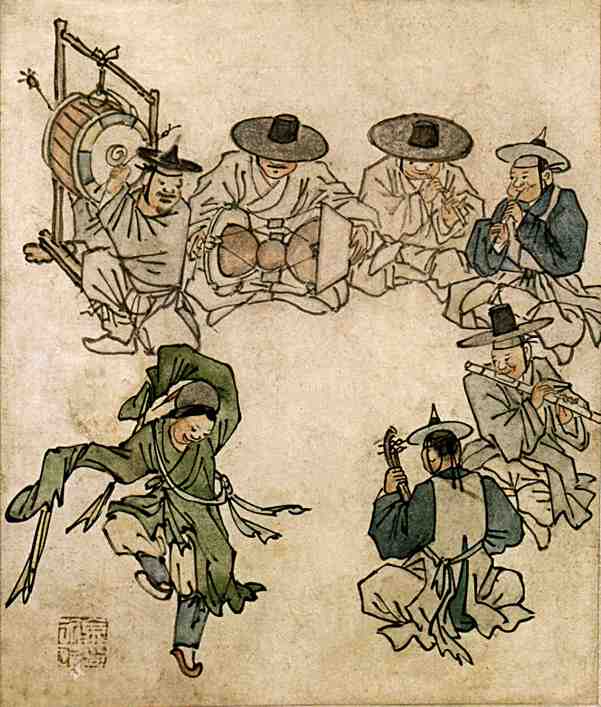|
Janggo
The ''janggu'' (, also transliterated as ''janggo'' or ''changgo'') or sometimes called ''seyogo'' (slim waist drum) is the most representative drum in traditional Korean music. It is available in most kinds, and consists of an hourglass-shaped body with two heads made from animal skin. The two heads produce sounds of different pitch and timbre, which when played together are believed to represent the harmonious joining of Um and Yang. The janggu is one of the four components of samul nori (사물놀이), alongside the buk (북), jing (징) and kkwaenggwari (꽹과리). History The earliest depictions of the instrument were inscribed on a bell belonging to the Silla (57 BC–935 AD) period and in a mural painting of the same period in Goguryeo (37 BC–668 AD) tomb. The oldest written records about an hourglass-shaped drum may be traced to the reign of King Munjong (1047–1084) of Goryeo as a field instrument. The Korean record from 1451 titled ''Goryeo-sa'', or History of ... [...More Info...] [...Related Items...] OR: [Wikipedia] [Google] [Baidu] |
Buk (drum)
The ''buk'' () is a traditional Korean drum. While the term ''buk'' is a native Korean word used as a generic term meaning "drum" (the Sino-Korean word being ''go''), it is most often used to refer to a shallow barrel-shaped drum, with a round wooden body that is covered on both ends with animal skin. Buk are categorized as ''hyeokbu'' (혁부, ) which are instruments made with leather, and has been used for ''jeongak'' (Korean court music) and folk music. History The buk used for court music are usually fixed with nails on the rims, while ones used for folk music are usually tied up with leather straps to form the shape. Performers in the court music usually beat their with ''bukchae'' (북채, a drum stick) on one hand or two hands together, while drummers in the folk music commonly beat their with it on their right hand as hitting the other side of the buk with their bare left hand. A while ago, even ''jong'' (종, bell) was referred to as "''soebuk''" (쇠북, metal ... [...More Info...] [...Related Items...] OR: [Wikipedia] [Google] [Baidu] |

